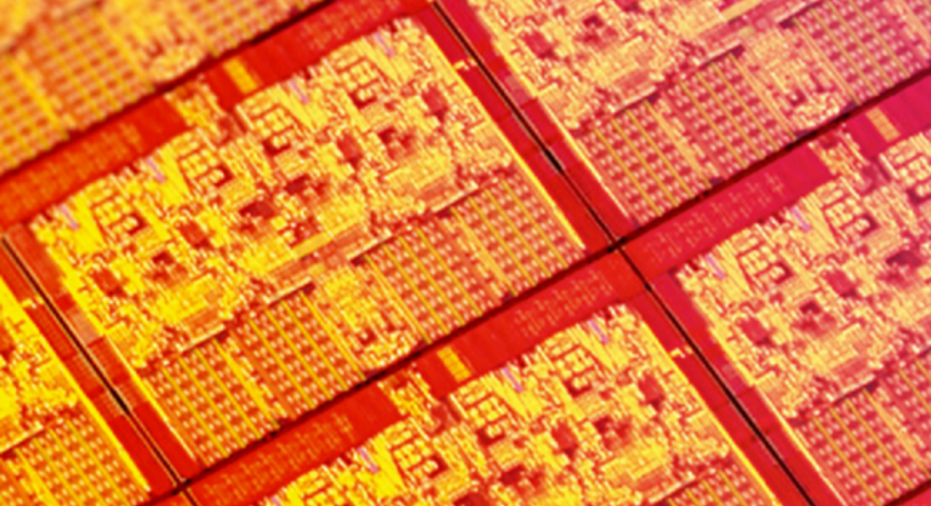Are Intel Corporation's New Broadwell-E Chips Totally Pointless?

Image source: Intel.
Charlie Demerjian recently penned a piece arguing that microprocessor giant Intel's latest crop of high-end desktop chips, commonly referred to as Broadwell-E, "should not have been released."
The argument that Demerjian makes goes something like this:
- Intel is targeting high-end gamers and other consumers with Broadwell-E, a family of chips that feature between six and 10 processor cores derived from Intel's server processor lineup.
- Most games and other applications that consumers are likely to use benefit more from fewer but faster CPU cores.
- The above fact means that Intel's $350 quad-core Core i7 6700K is generally a better consumer chip than any of the, generally much more expensive Broadwell-E chips.
I would say that if somebody is looking to build a computer that's used primarily for gaming and doesn't intend to overclock his or her processor (this means setting the chip to run at higher speeds than what Intel rates it for from the factory), Demerjian is probably right.
Out of the box, the $350 Core i7 6700K is likely to be, on average, a better gaming/consumer chip than even the most powerful $1750 Core i7 6950X Extreme Edition part.
However, when one takes into account that all of these chips can be overclocked, the picture gets a little less clear.
Core i7 6700K still has the best per-core performance, but...
The Core i7 6700K can generally be overclocked to around 4.7GHz, depending on the cooling solution used, quality of the chip, and so on. The Skylake CPU core inside of the 6700K also offers better performance-per-clock since it is a newer, more refined core than the older Broadwell core in 6950X.
According to various reviews, the 10-core 6950X can reach around 4.1GHz on all cores before thermals become an issue, even on very high-end cooling.
"We don't recommend going over 4.0 [GHz] or 4.1 GHz, depending on the quality of your sample," Chris Angelini of Tom's Hardware writes. "Anything higher turns the CPU into a space heater."
The difference in frequency between a 4.1GHz 6950X and a 4.7GHz 6700K is just shy of 13%, narrowing the 20% out of the box difference (3.5GHz max turbo for the 6950X versus 4.2GHz max turbo for the 6700K). If we call the per-clock performance advantage of the Skylake architecture relative to the older Broadwell architecture used in the 6950X around 10%, then for tasks that can't use more than four cores, the 6700K could be noticeably faster.
However, if a workload/game can make good use of many cores, the higher core counts of the Broadwell-E parts should more than offset their frequency/performance per clock deficits relative to the quad core Skylake chips.
Tom's Hardware even tested a few games that can make use of many cores (F1 2015 and Ashes of the Singularity), and in those games, the Broadwell-E parts pulled ahead of the Skylake-based 6700K. Perhaps in the future, more games will take better advantage of more than four cores.
Not pointless, but Intel does have a problem
Personally, I disagree that the Broadwell-E parts "shouldn't have been released" as Demerjian says. There is appeal to the idea of processors with higher core counts that can be overclocked, and clearly there are people willing to hand their money over to Intel for such parts.
However, I do think that Intel does need to improve the attractiveness of its high-end desktop offerings. In particular, I believe many people have a problem with the fact that they are buying yesterday's processor cores for a premium -- even if they're getting far more of them.
The good news is that this is likely to be "fixed" soon. As I wrote previously, Intel seems to be purposely pushing out the enthusiast version of its quad-core Kaby Lake processor to launch alongside its next-generation high-end desktop platform known as Skylake-X (which BenchLife says will come in six, eight, and 10 core variants).
Out of the box, the Kaby Lake chips will likely offer better per-core performance than the Skylake-X chips. However, overclocking both should erase the majority of the frequency deficit. Furthermore, Kaby Lake isn't expected to offer significant architectural improvements over the prior Skylake core, while the CPU core used in Skylake-X is expected to be a higher performance, server-specific configuration of the Skylake CPU core.
In a nutshell, overclocked chip to overclocked chip, the per-core performance gap between tomorrow's quad core Kaby Lake chip and tomorrow's six to 10 core Skylake high-end desktop chips should be much narrower than it is today.
The next step for both the mainstream and high-end desktop platforms will be a transition to the Cannonlake architecture. As long as both the mainstream Cannonlake and the high-end desktop Cannonlake platform arrive in the first half of 2018, the problem of the high-end desktop platform being "outdated" should be solved for good.
The article Are Intel Corporation's New Broadwell-E Chips Totally Pointless? originally appeared on Fool.com.
Ashraf Eassa owns shares of Intel. The Motley Fool recommends Intel. Try any of our Foolish newsletter services free for 30 days. We Fools may not all hold the same opinions, but we all believe that considering a diverse range of insights makes us better investors. The Motley Fool has a disclosure policy.
Copyright 1995 - 2016 The Motley Fool, LLC. All rights reserved. The Motley Fool has a disclosure policy.



















